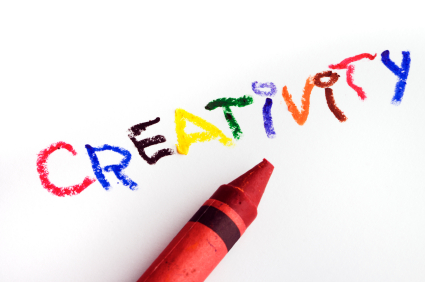Creativity in schools
Wake up, go to school. Study for tests, raise your hand to answer questions. Wear appropriate clothing. Say the right things, behave the right way.
Education is so important for children, and schools are the best places to foster a love of learning. But sometimes they’re too good at standardizing students—at producing students who are great at giving the right answers to questions and following orders, but who can’t come up with creative solutions to unique problems.
It’s important to foster creativity from a young age. By teaching kids early on that it’s okay to make mistakes and to be different, we can raise a generation that’s not afraid to throw out wild solutions to global issues. Incorporating creativity in schools is a great place to start.
Kids and learning
Much of what we learn occurs during childhood. When young, children’s brains are still developing. As they age, their neural networks become increasingly developed, and it becomes more difficult to learn new concepts such as a foreign language and new skills such how to think outside the box.
During this critical time of growth, children spend nearly 40 hours each week in school. What they learn there, then, can have a lasting impact on their way of thinking and doing. If they learn to raise their hands only when they know the right answer, they’ll stop searching for alternative solutions. If they learn a standardized routine day in and day out, that way of behaving may be ingrained in them.
[Tweet “”What kids learn during school can have a lasting impact on how they act.””]
It’s important then, that parents, teachers and administration actively seek to foster creativity in schools.
Creativity in schools
Schools have long been important in preparing children for a successful life. From basic math to high-level writing and reading comprehension, many of the skills kids learn in school are essential to a successful adulthood.
But, as an article in Forbes argues, the world has changed, and the elements that were once crucial to success in the world have changed with it. Anymore, nothing is predictable. “We live in a time where things are constantly changing and evolving,” said Leonard Sommer of Forbes. “The old, established rules used by past generations to educate and secure success are not suitable for the next generation who will thrive in such an innovative time.”
Indeed, simply understanding math and varying your sentence structure and word choice no longer guarantee an executive position in a big company. What our ever-changing world needs now is people who can see a problem and offer solutions—new solutions, different solutions, solutions that might at first seem insane or impossible.
Schools, in their search for the one right answer to every question, are quickly squashing this creative problem-solving ability, as well as many other innovative and creative qualities.
How to best implement creativity?
This is not, by any means, the first time this concern has been raised. In fact, many people have offered solutions to this problem.
Nearly 10 years ago, Ken Robinson gave a TedTalk on the role of education in developing creativity, arguing that schools educate us out of creativity. However, noting the unpredictability of the world, he said, in his opinion, “creativity now is as important in education as literacy, and we should treat it with the same status.”
One of the main problems, Robinson continued, is that schools stigmatize mistakes. In education, being wrong is the ultimate failure. A key aspect of creativity is an openness to mistakes, a willingness to be wrong. “If you’re not prepared to be wrong,” Robinson said, “you’ll never come up with anything original.” However, by the time most children have finished school and enter the work force, they’ve lost the capacity to take a chance and be wrong. They’re afraid of making mistakes.
Thus, one of the most important solutions is eliminating this idea of being wrong as a sign of failure. Teachers often explain math as having only one method, science as having only one answer, english as having only one correct sentence structure. In reality, though, there are many ways to compute the same math problem. There are many possible conclusions to the same hypothesis. There are hundreds of ways to say the same sentence. It’s not fair to say there are no wrong answers in the world, but it’s also unfair to say there’s only one right one.
[Tweet “Yes, there are wrong answers, but there’s not only one right answer, either.”]
Another important solution, as noted in the New Statesman, is developing teaching styles that are responsive to the individual needs of children. Kids don’t come in a standard package. They all have different interests, different learning styles and different needs. It’s important that teachers play to those needs in order to keep children engaged. Creativity relies on self-determination, Dan Holden of the New Statesman said. Thus, maintaining a high level of engagement through responsive education is extremely important in developing a child’s creative capacities.
Some schools are taking note of this. High schools on Prince Edward Island recently added classes that foster innovation and creativity to their graduation requirements. From robotics to music and from welding to globalism, these classes focus on creating, designing and constructing. Such classes encourage students to create their own solutions to unique problems and situations rather than following a list of predetermined steps to reach a predetermined outcome.
Clearly, the issue of fostering creativity in schools at a young age is complex, but it’s extremely important to discuss. The world is constantly changing. Serious problems such as climate change and resource depletion worsen each day. Innovative solutions are needed, but the only way we’ll ever find those solutions is by encouraging kids to take a chance and suggest even the wildest solutions.
They might seem crazy at first, but often times, the craziest solutions tend to be the best ones.
[vc_separator type=”transparent” up=”20″ down=”20″]
[vc_separator type=”transparent” up=”20″ down=”20″]
Title image via https://blog.ketchum.com/is-creativity-a-testro-fest/
[vc_separator type=”transparent” up=”20″ down=”20″]
[vc_separator type=”transparent” up=”20″ down=”20″]





Leonard Sommer | Jan 4, 2016 at 11:44 am
Dear Kelsie, thanks for your post!
Kelsie Schrader | Jan 4, 2016 at 2:10 pm
Thanks for reading, Leonard. Glad you enjoyed it!
America is Creative Reflection – The Fantastic Four | Aug 28, 2017 at 10:06 pm
[…] http://www.shieldcasework.com/creativity-in-schools/ […]